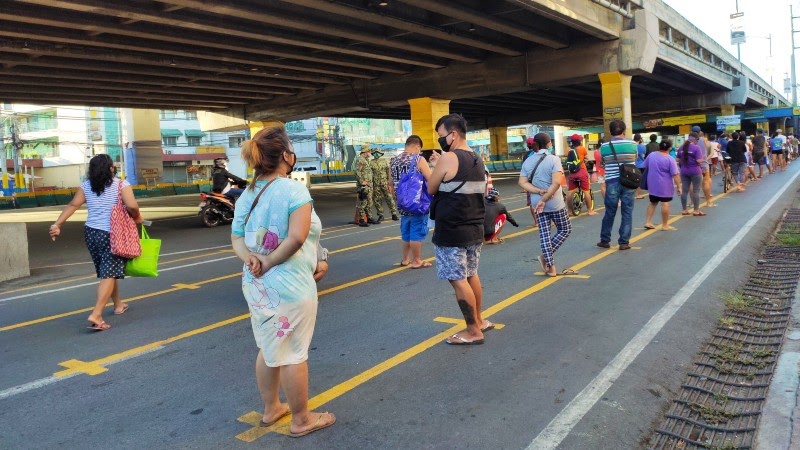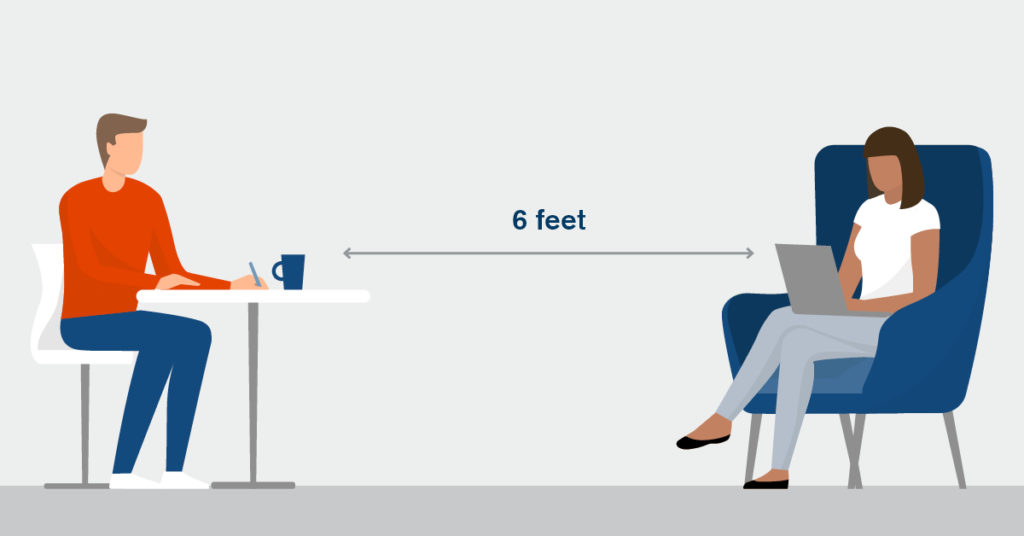How effective is social distancing?
As of October 2020, millions of people continue to be affected by COVID-19. With rising cases, the best way to slow the spread is to simply stay at home, but prolonged isolation has proven difficult. Even for people who stay inside diligently, leaving the house once in a while is necessary to simulate some sense of normalcy. So, the widely accepted solution to slow the spread of COVID-19 is for everyone to wear a mask and stay 6 feet apart from other people when in public.

The Centers for Disease Control and Prevention (CDC) defines social distancing as “keeping a safe space between yourself and other people who are not from your household” (1). The closer people are to each other, the more likely it is that they contract the disease because the virus is airborne (2). The CDC explains, “COVID-19 spreads mainly among people who are in close contact [within about 6 feet] for a prolonged period. Spread happens when an infected person coughs, sneezes, or talks, and droplets from their mouth or nose are released into the air and land in the mouths or noses of people nearby” (3). People can be asymptomatic and spread the virus, so it is important to take precautions and distance from others to prevent that from happening.

Although respiratory droplets aren’t the only way COVID-19 spreads, it is considered the main way, which is why social distancing is one of the most important ways for people to stop the spread. Social distancing measures have been put in place in almost every place imaginable, but that doesn’t mean everyone is following them.
In a study, Health Affairs found that “[COVID-19] cases would have been ten times higher without shelter-in-place orders and thirty-five times higher without any social distancing restrictions” (4). That just goes to show how effective social distancing is in stopping the spread. Without social distancing guidelines, the US would have even more COVID cases than current numbers suggest. For example, in Florida, people started to gradually stop social distancing. In the summer, they saw their cases suddenly rise (5). This same scenario has happened in other parts of the country as well.
In countries like Italy, which had a major COVID-19 outbreak earlier this year, stricter social distancing measures were put in place. These measures were very important in decreasing the spread of the virus, as they saw a sharper decrease in cases when the social distancing measures were implemented. In the United States, social distancing measures were less strict in many regions of the country, which led to increased cases across several states. So, although other countries started off with a much greater amount of cases than the U.S., their stricter social distancing measures made them more successful in their handling of the virus.
Social distancing measures are extremely important in stopping the spread of this deadly virus, and it is proven that when people do not adhere to social distancing, the cases rise. Therefore, social distancing is arguably one of the most effective ways to reduce the risk of contracting COVID-19, as well as wearing a mask.
– Rahdin Salehian
References
- Centers for Disease Control. (2020, July 15). Social Distancing. Centers for Disease Control. Retrieved from https://www.cdc.gov/coronavirus/2019-ncov/prevent-getting-sick/social-distancing.html.
- Healthline. Experts Say COVID-19 Is Airborne: Here’s How You Can Stay Safe. Healthline. Retrieved from https://www.healthline.com/health-news/experts-say-covid-19-is-airborne-heres-how-you-can-stay-safe.
- Centers for Disease Control. (2020, July 15). Social Distancing. Centers for Disease Control. Retrieved from https://www.cdc.gov/coronavirus/2019-ncov/prevent-getting-sick/social-distancing.html.
- Bella, Timothy. (2020, May 15). Places without social distancing have 35 times more potential coronavirus spread, study finds. The Washington Post. Retrieved from https://www.washingtonpost.com/nation/2020/05/15/social-distancing-study-coronavirus-spread/.
- Taylor, Langston. (2020, August 28). Florida was social distancing less and less, until its summer coronavirus explosion. Tampa Bay Times. Retrieved from https://www.tampabay.com/news/health/2020/08/28/florida-was-social-distancing-less-and-less-until-its-summer-coronavirus-explosion/.
Images
- https://lh3.googleusercontent.com/DeW-o4BD8YY4SF6bGlvA4DsTRMKF9VDJTuxhDZRyppzp5_KJHZ34wcJMJshTe2UrevHOAaAh3adiCGqqnnZws2gQVhEo3olsj2AN5pV3RpA8Pj8zf4oYArGZL05iUkClXSgEXxyD
- https://www.houstonmethodist.org/-/media/Images/Contenthub/Article-Images/Coronavirus/Hub_CoronavirusSocialDistancing_Social.jpg







Comments are closed.